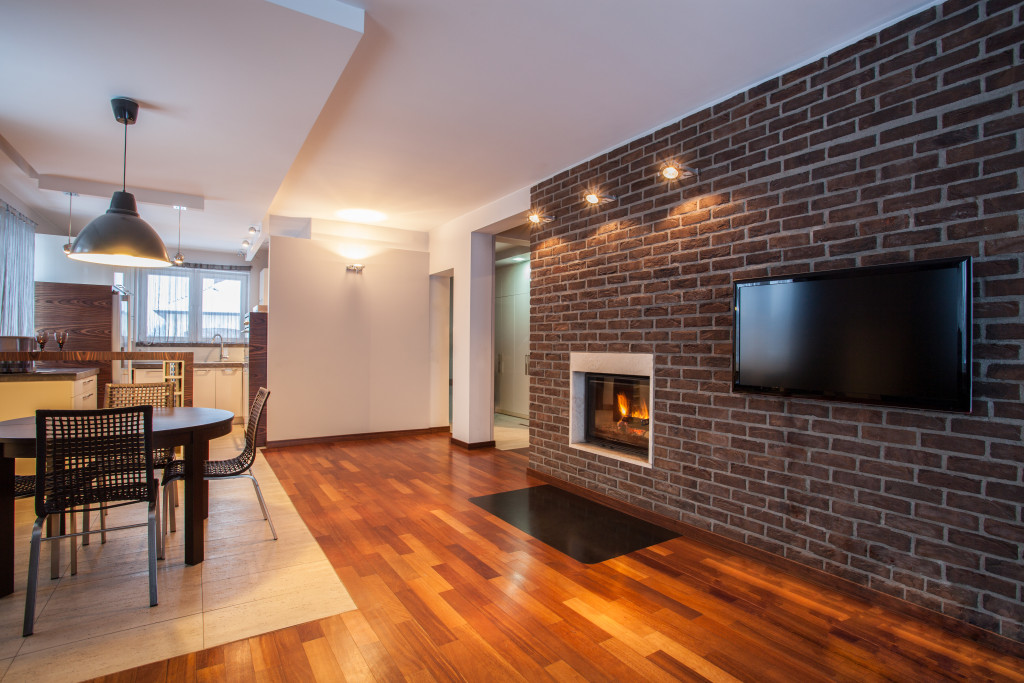- Elevating your living space can transform your daily experience.
- Prioritize comfort and functionality in furniture and layout.
- Play with colors, textures, and lighting to add interest and personal touches.
- Bring in elements of nature and upgrade details like residential glass for a luxurious touch.
- By following these tips, you can create a unique and inviting home.
Your home is your sanctuary, and elevating your living space can transform how you experience comfort and aesthetics daily. Creating an environment that is both functional and stylish doesn’t have to be overwhelming or costly. Here are five insightful tips that can guide you in enhancing your home, turning it into a space that radiates warmth, style, and character.
1. Prioritize Comfort and Functionality
In your quest to elevate your living space, prioritizing comfort and functionality is key. These two aspects are the foundation of any stylish and welcoming home.
Start by assessing your furniture and layout. Are your sofas and chairs comfortable? Is there enough space to move around freely? Rearrange your furniture to create a natural flow, and consider investing in pieces that offer comfort and utility. Incorporating storage solutions that blend seamlessly into your decor can enhance functionality while maintaining aesthetics.
2. Play with Colors and Textures

Color and texture have the power to transform a space. The right combination can create harmony and evoke emotions that resonate with your personality and style. Mixing and matching different textures can add depth and interest to your living space.
Here are some tips on how to play with colors and textures:
Choosing a Color Palette
When selecting a color palette, consider the mood you want to create in your space. Do you want a serene and peaceful atmosphere, or do you prefer something more vibrant and lively? Look for inspiration from nature, interior design blogs or magazines, or even social media platforms like Pinterest.
Once you know the colors you want to incorporate, start by choosing a dominant color and then one or two accent colors. A neutral base can help tie the different colors together and create balance in the room.
Mixing Textures
When it comes to adding texture, don’t be afraid to mix and match. Combining different textures creates visual interest and adds depth to your space. Consider layering a plush rug over hardwood flooring or adding a chunky knit throw to a leather sofa. Mixing textures also allows you to play with different patterns and materials.
Remember to consider the functionality of each texture as well. For example, opt for durable and easy-to-clean fabrics for high-traffic areas, while softer and more delicate textures can be used in areas meant for relaxation.
Creating Contrast
Using contrasting colors and textures can make a space more dynamic and visually appealing. Pairing soft, muted tones with bold pops of color can create a striking contrast that adds personality to your room. Similarly, combining smooth and rough textures can add visual interest and balance.
Additionally, consider the lighting in the room when creating contrast. Brighter lighting can accentuate colors and textures, while softer lighting can create a more subdued atmosphere.
Adding Personal Touches
Lastly, don’t be afraid to add personal touches to your space through colors and textures. Incorporate elements that hold sentimental value or reflect your personality. This could be a vibrant artwork from your travels or a plush throw blanket in your favorite color.
Personalizing your space with colors and textures not only adds character but also makes it feel like a true reflection of yourself. Don’t be afraid to experiment and have fun with different combinations until you find what feels right. Remember, the possibilities are endless for playing with colors and textures in your living space.
3. Introduce Greenery and Natural Elements

Bringing in elements of nature can instantly breathe life into your living space, creating a sense of tranquility and connection to the outdoors.
Introduce plants and greenery that are easy to care for and suit your home’s lighting conditions. Even small potted plants can make a significant difference. Incorporating natural materials such as wood, stone, or woven fabrics can also elevate the overall ambiance of your space.
4. Illuminate with the Right Lighting
Lighting is a crucial element in setting the mood and ambiance of your living space. Proper lighting can make a room feel inviting, spacious, and cozy.
Evaluate your current lighting situation and consider adding layers of light. Incorporate ambient lighting through ceiling fixtures, task lighting in areas where you work or read, and accent lighting to highlight artwork or architectural features. Pay attention to the warmth and brightness of your bulbs to ensure a harmonious feel.
5. Focus on Details and Finishes
Sometimes, the smallest details can make the biggest difference in elevating your living space. Paying attention to finishes and details can transform an ordinary room into a space that feels curated and personalized.
Consider upgrading handles, faucets, or light fixtures to add a touch of sophistication. Additionally, investing in residential glass can be a game-changer. Customized glass solutions, such as bespoke mirrors, shower enclosures, or glass partitions, can add a luxurious and modern touch to your space. These professionals can provide tailored solutions that complement your aesthetics while enhancing functionality.
Final Words
Elevating your living space involves a blend of functionality, aesthetics, and personalized touches. By prioritizing comfort, playing with colors and textures, introducing natural elements, optimizing lighting, and focusing on details such as residential glass services, you can transform your home into a haven that reflects your style and meets your needs. Each of these tips contributes to creating a space that is uniquely yours and effortlessly inviting.

